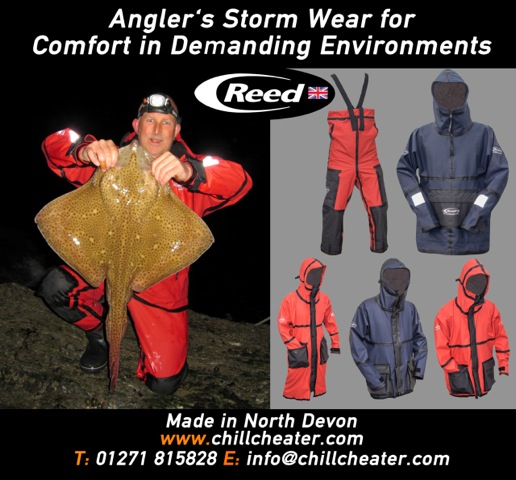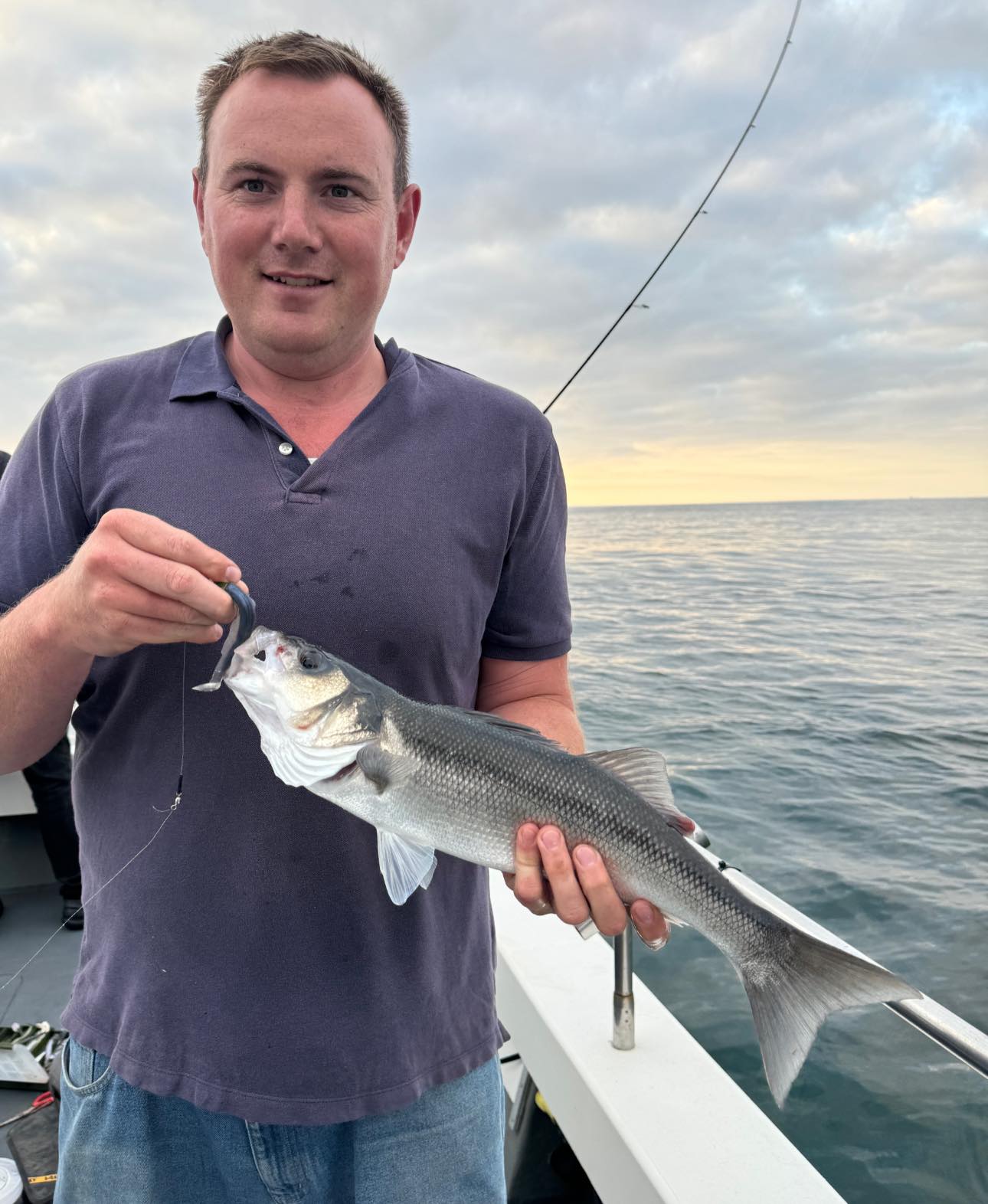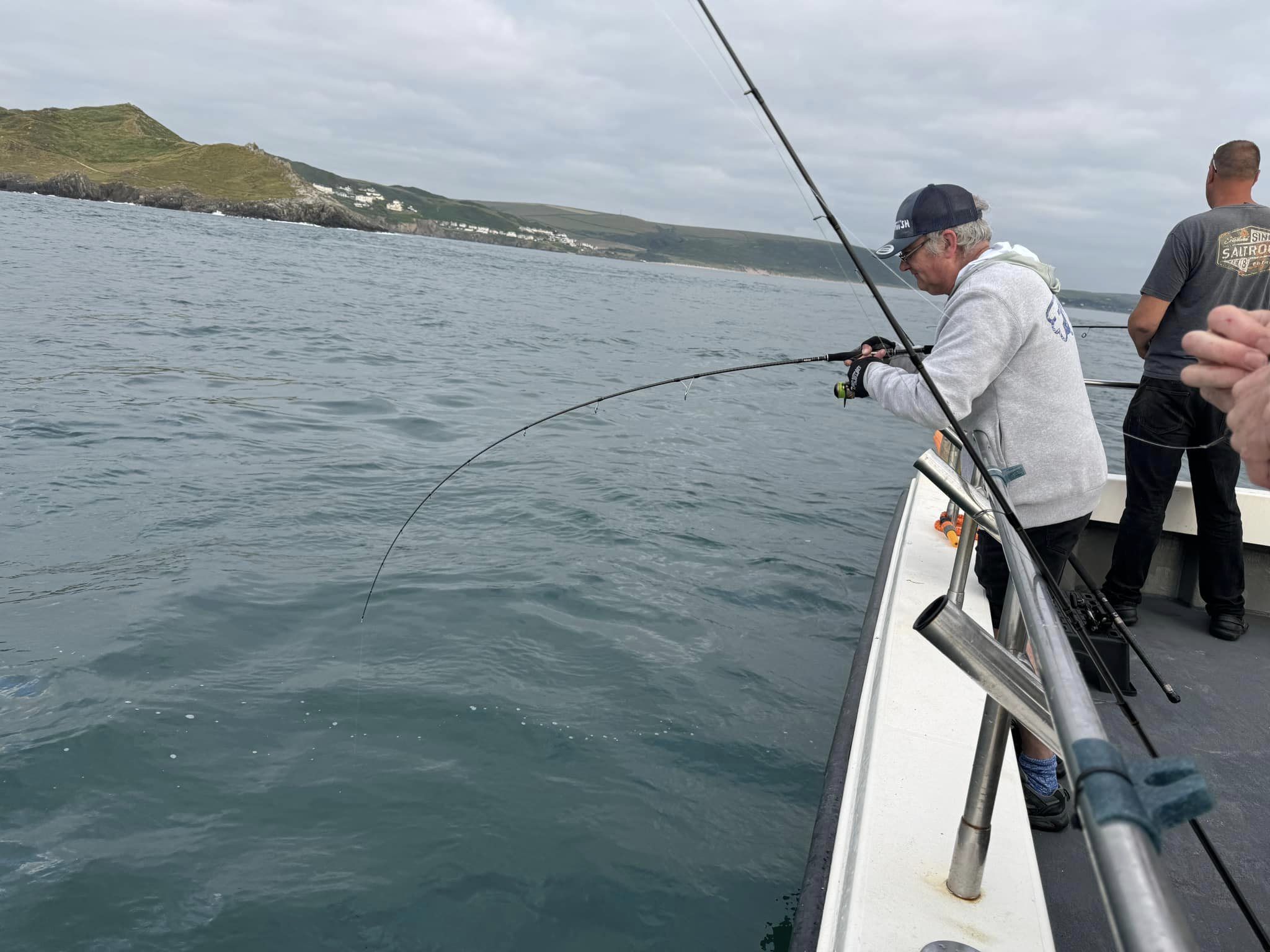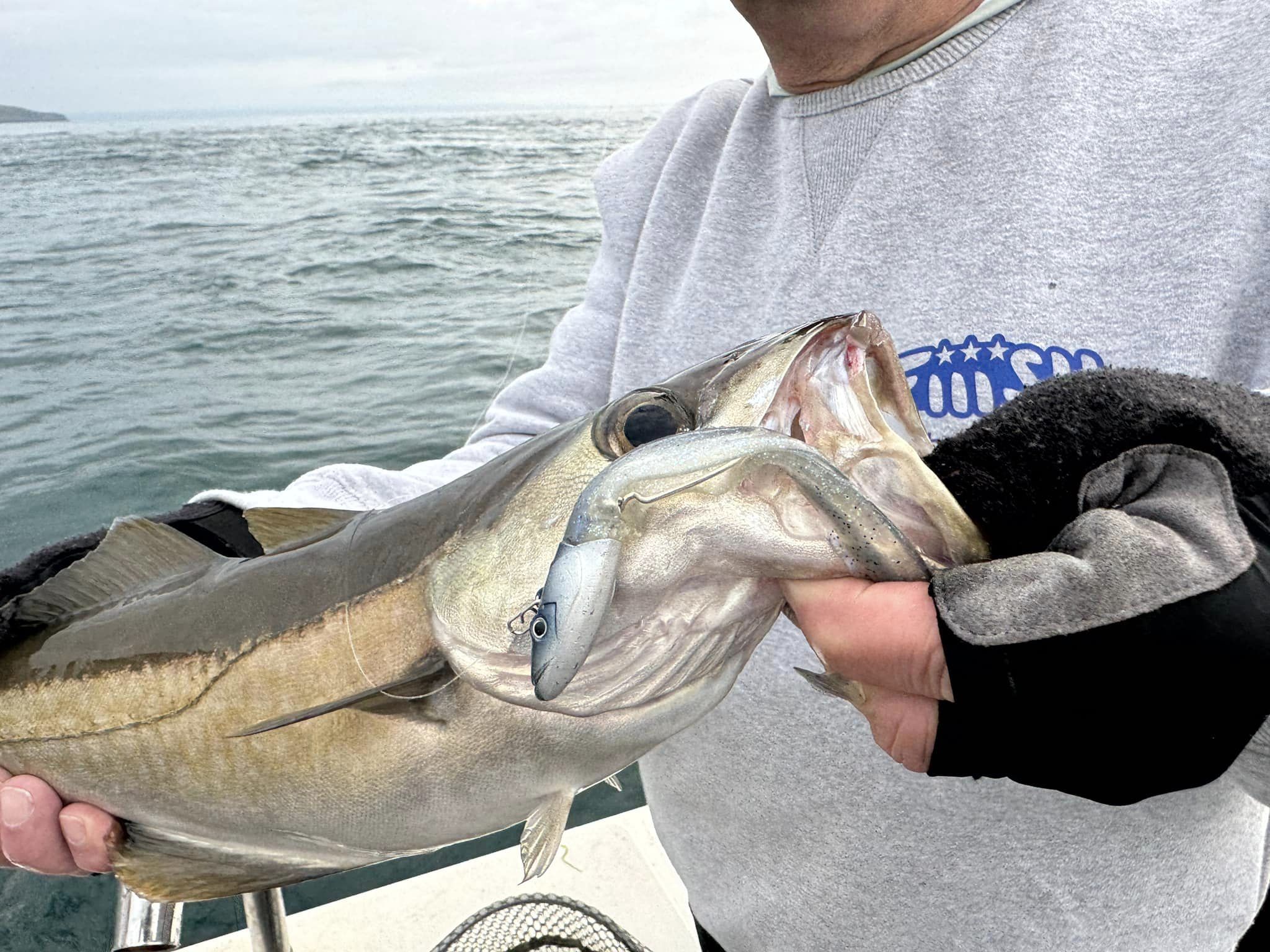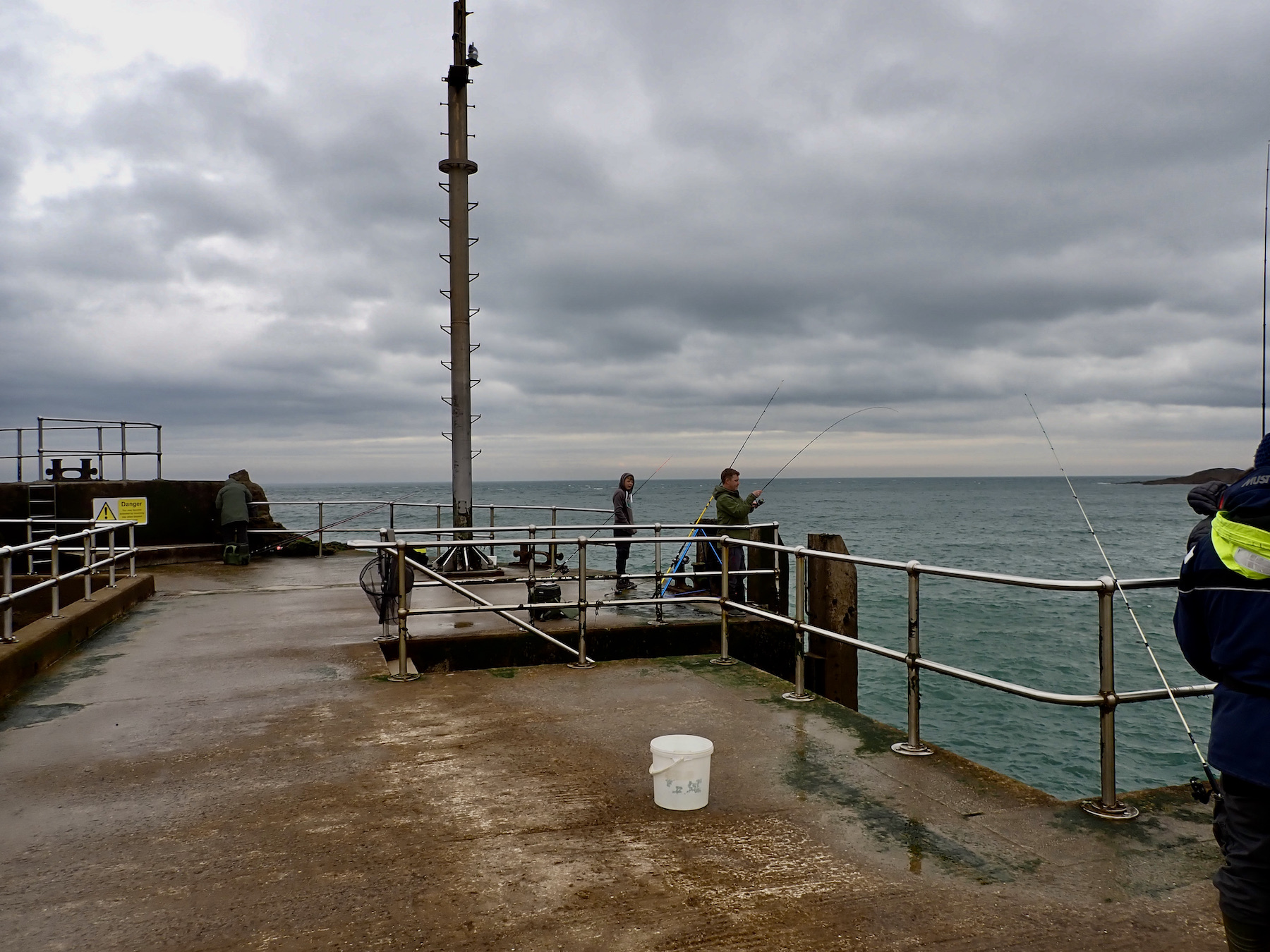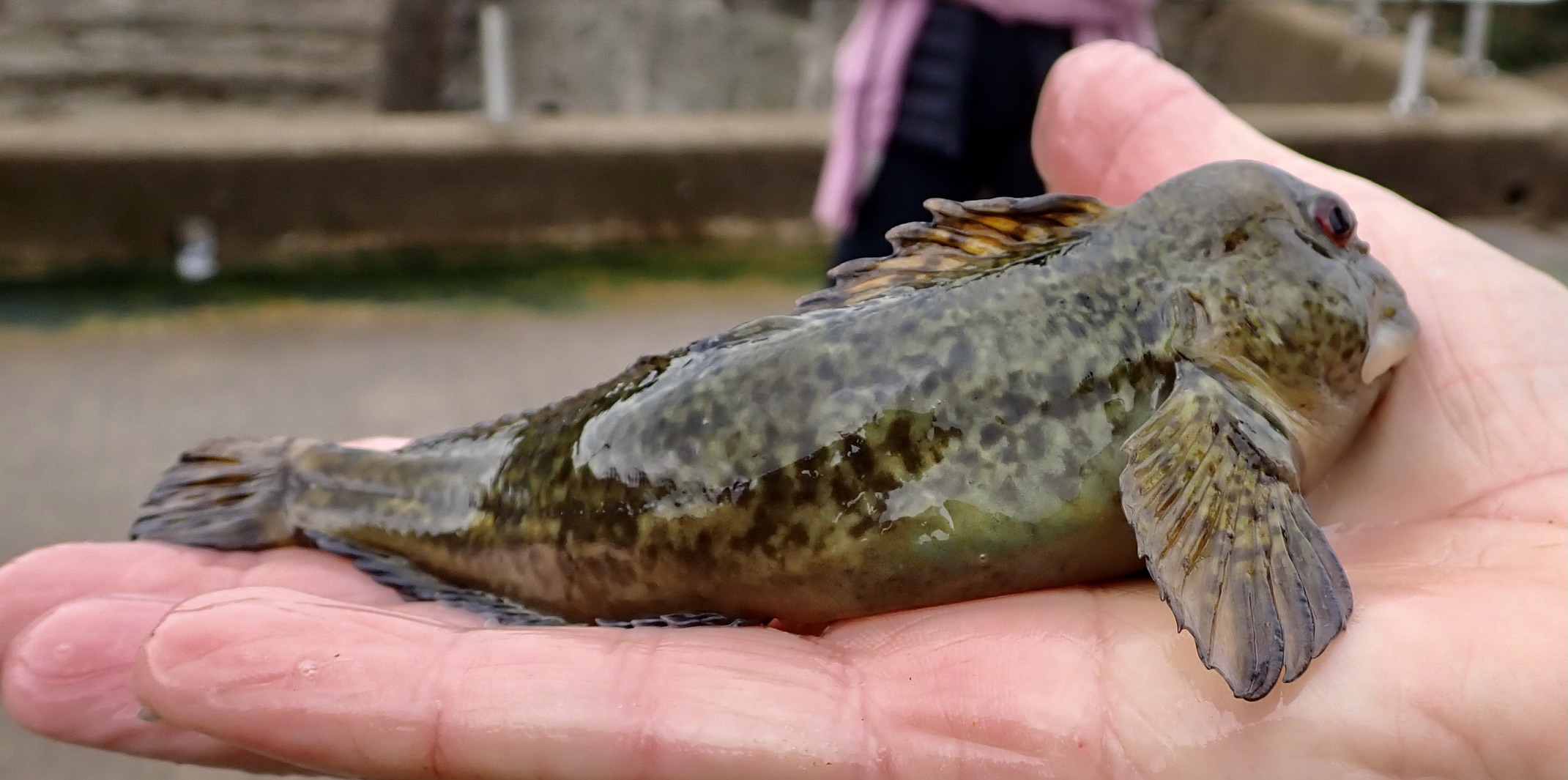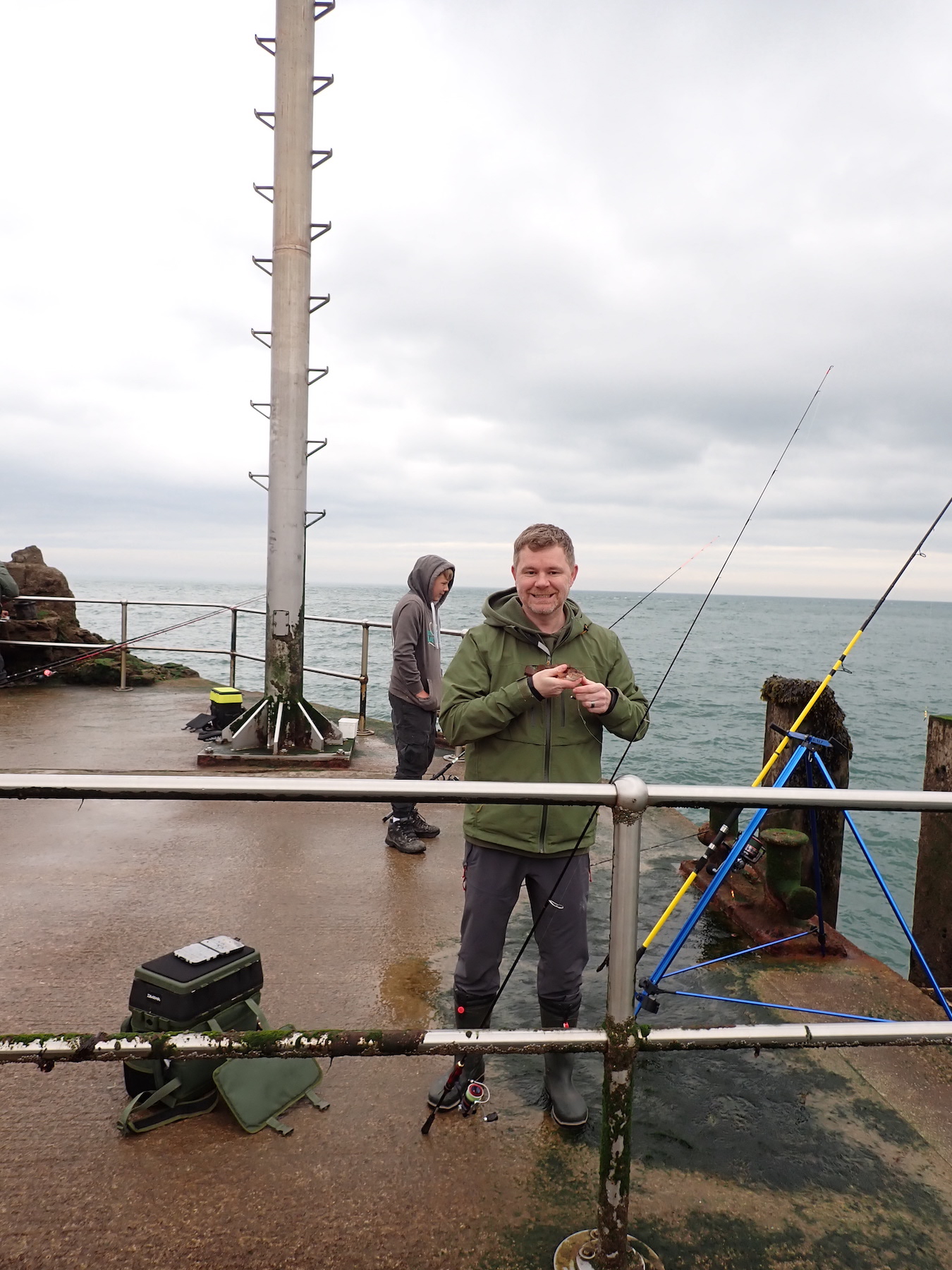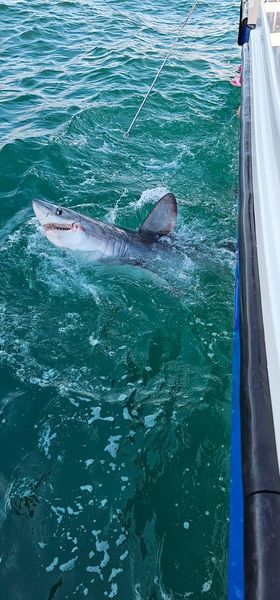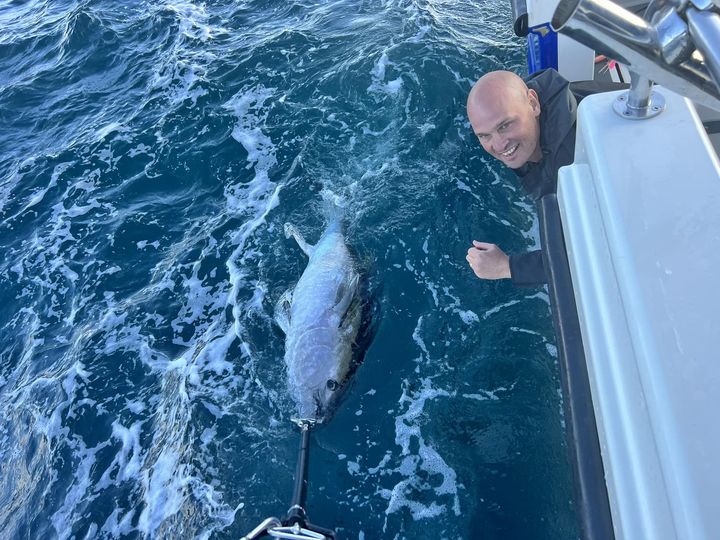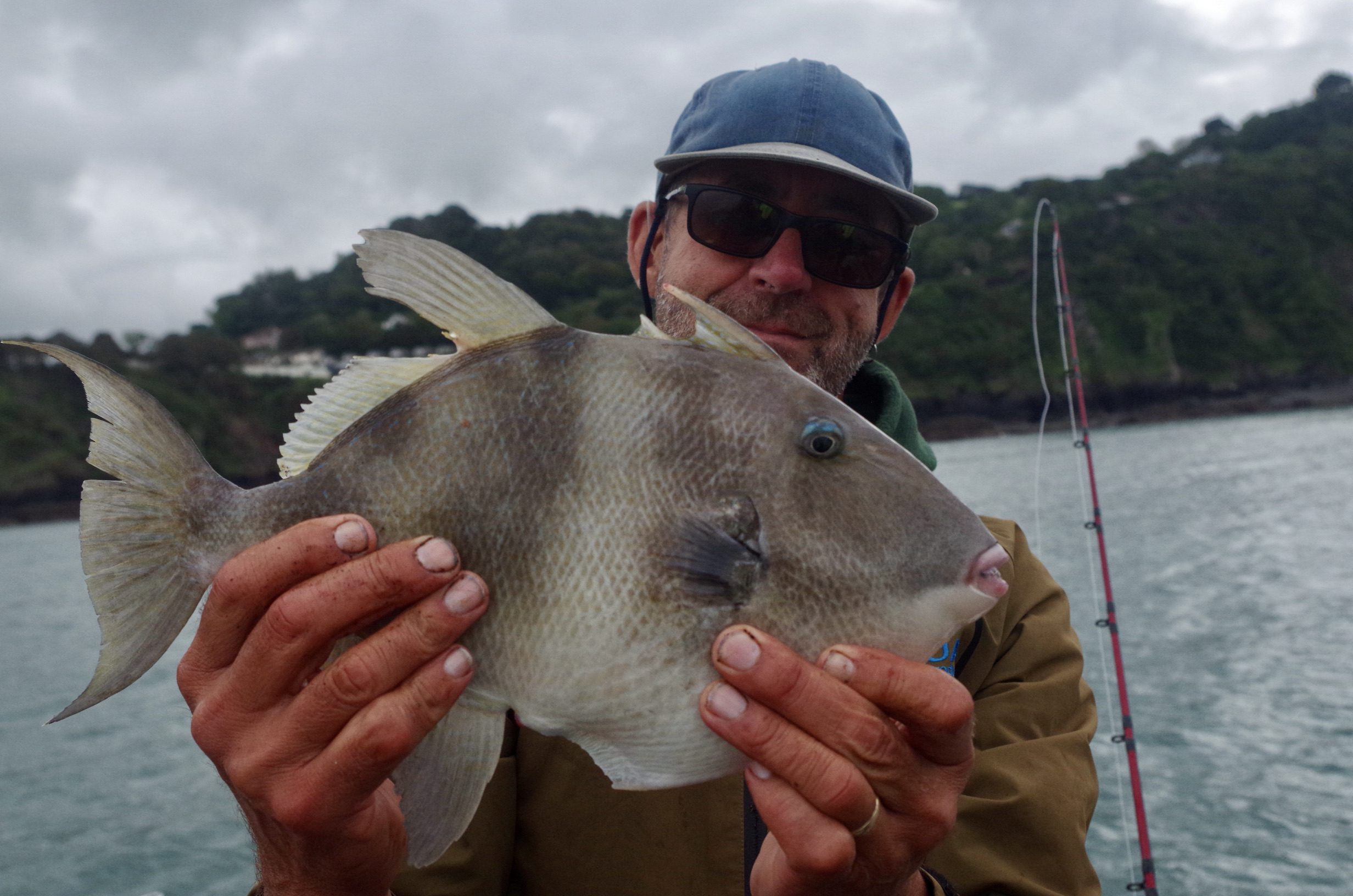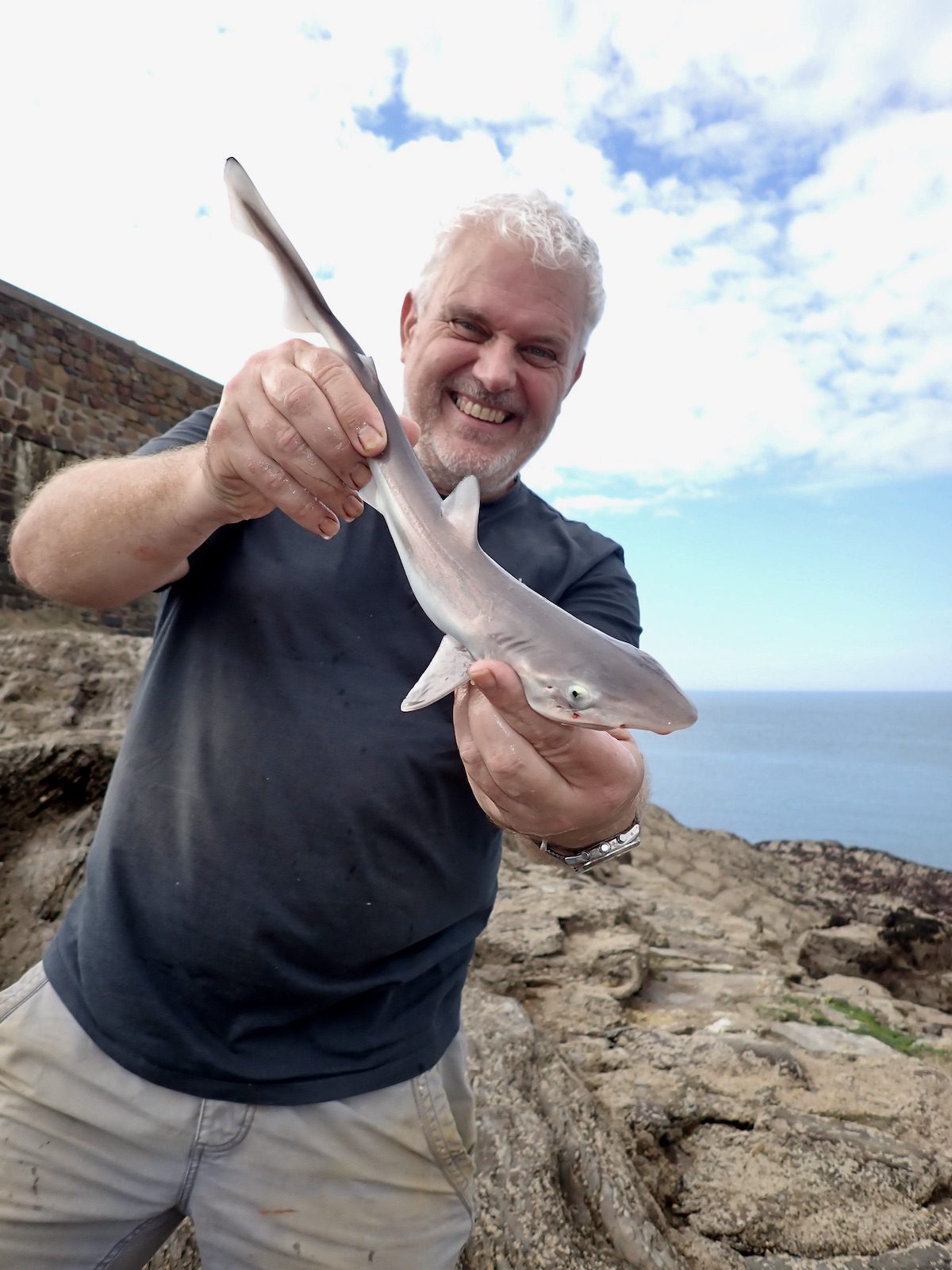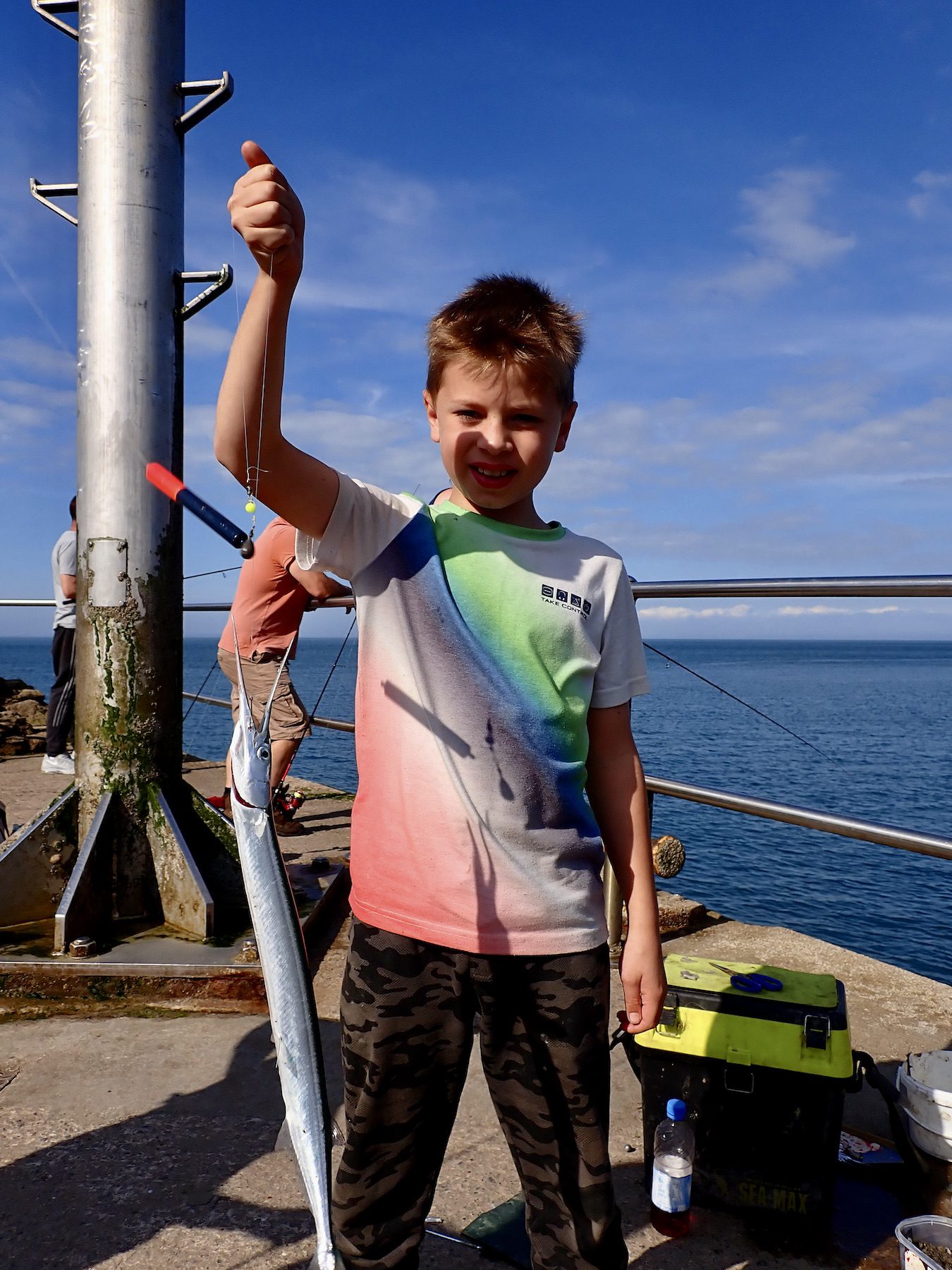
I was delighted to be invited to join a few friends on Dan Welch’s new boat Predator 2. Dan had spotted a window of opportunity with light winds forecast over the evening high water. Strong winds were forecast to sweep in overnight irradicating any boat fishing trips over the weekend.
Five of us climbed onto Predator 2 at 3.30pm. Skipper Dan Welch, Dave Welsh, Derek Stevens, Jonathon Stanway and myself.

The sea was calm and the water clear as we set out from Ilfracombe’s harbour. I relished the familiar scenery of North Devon’s rugged coast and landmarks. It is always refreshing to leave the hustle and bustle of the town to reach the tranquil detachment of the open sea.
We stopped for a drift off the tunnels outfalls catching a few mackerel for bait. We then steamed out to drift over a few reefs for bass. I stuck with the feathers and ensured that we had a full bucket of fresh bait for the main event.

Our intended target was tope over the high water slack. After several drifts without bass Dan suggested we head out and drop anchor. The tide would be running quite hard but would soon ease ensuring that we capitalised on the maximum time for tope action.
I always feel a sense of anticipation as the boat settles at anchor and the engine is cut. A peaceful silence descends, just the gentle slurp of water against the boats hull and the occasional cry of a seagull.
Several manx shearwaters were circling gracefully above the water. I was unsure if they were shearwaters but a quick google as I write this confirmed my identification. I was fascinated to learn that the manx shearwater are long lived birds sometimes living beyond fifty years of age. A fifty year old bird has it is estimated flown over 600,000 miles on migration throughout its life.
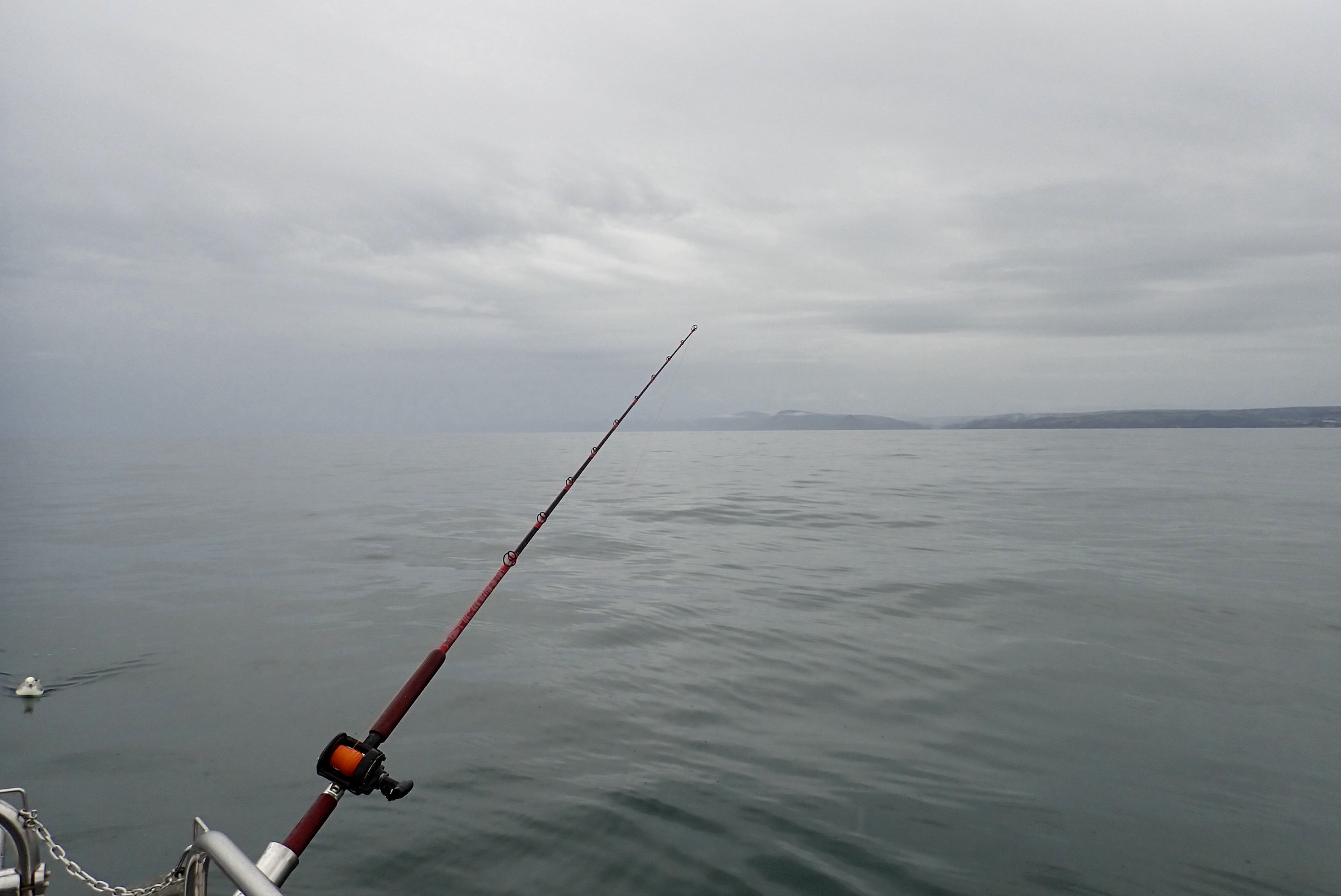
Looking up the Bristol Channel the dark towering cliffs of Great Hangman and Holdstone Down were capped with wisps of white mist. The sea was oily calm, thousands of jelly fish drifted past in the clear water. To the West weak sunshine struggled to break through a sky of grey.
I prepared a mackerel flapper and sent it into the depths with 1lb 8oz of lead to combat the strong tide. With all our baits in place we chatted of our appreciation of the evening and the prospects ahead. A couple of dogfish rattled the rod tips and were brought to the surface often just hanging onto the baits letting go at the side of the boat.
Dan was first to hook into a hard fighting tope bringing a fish of perhaps twenty five pounds to the boat after a good tussle in the strong tide.


Jonathon hooked a good fish that came off after a few seconds. I felt a sharp rap on my rod tip and paid out a couple of yards of line. I waited until the rod tip ripped over hard and tightened into a powerful fish that headed off down tide at a rate of knots ripping several yards of line from the reel. I leant back bending the rod, relishing the powerful force at the end of the line.

After the initial powerful runs the fish started to succumb to constant pressure and I pumped a heavy weight to the surface. From time to time there came heavy lunges and I was forced to give a little line. As the fish neared the boat we peered into the depths to catch a glimpse of the sleek shark like creature.

The tope was a good fish and caused a few anxious moments as it thrashed at the surface demolishing Dan’s tailor in the process. Plan B of a large landing net eventually secured the prize.
The fish was carefully weighed in Dan’s capacious weigh sling registering a weight of 36lb. After a quick photo the tope was returned and swam strongly away.
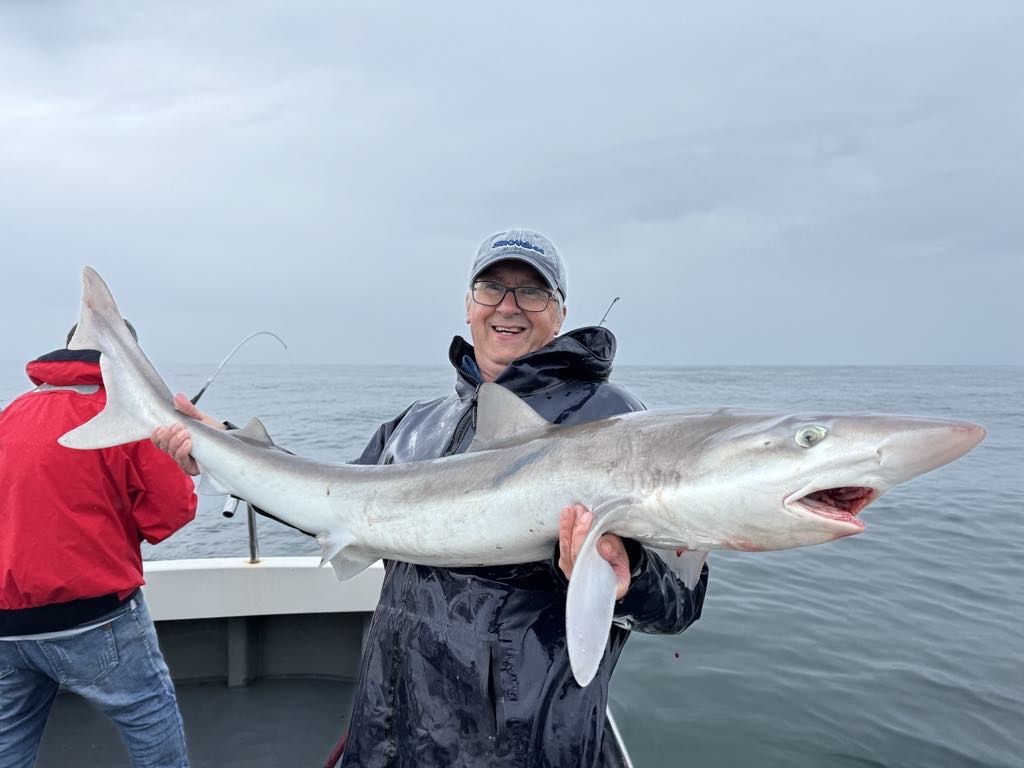
The next couple of hours saw tope caught by all on board most around 25lb. Several fish were also lost as hook holds gave way or in one case the braid was severed as the fish probably rolled in the line.

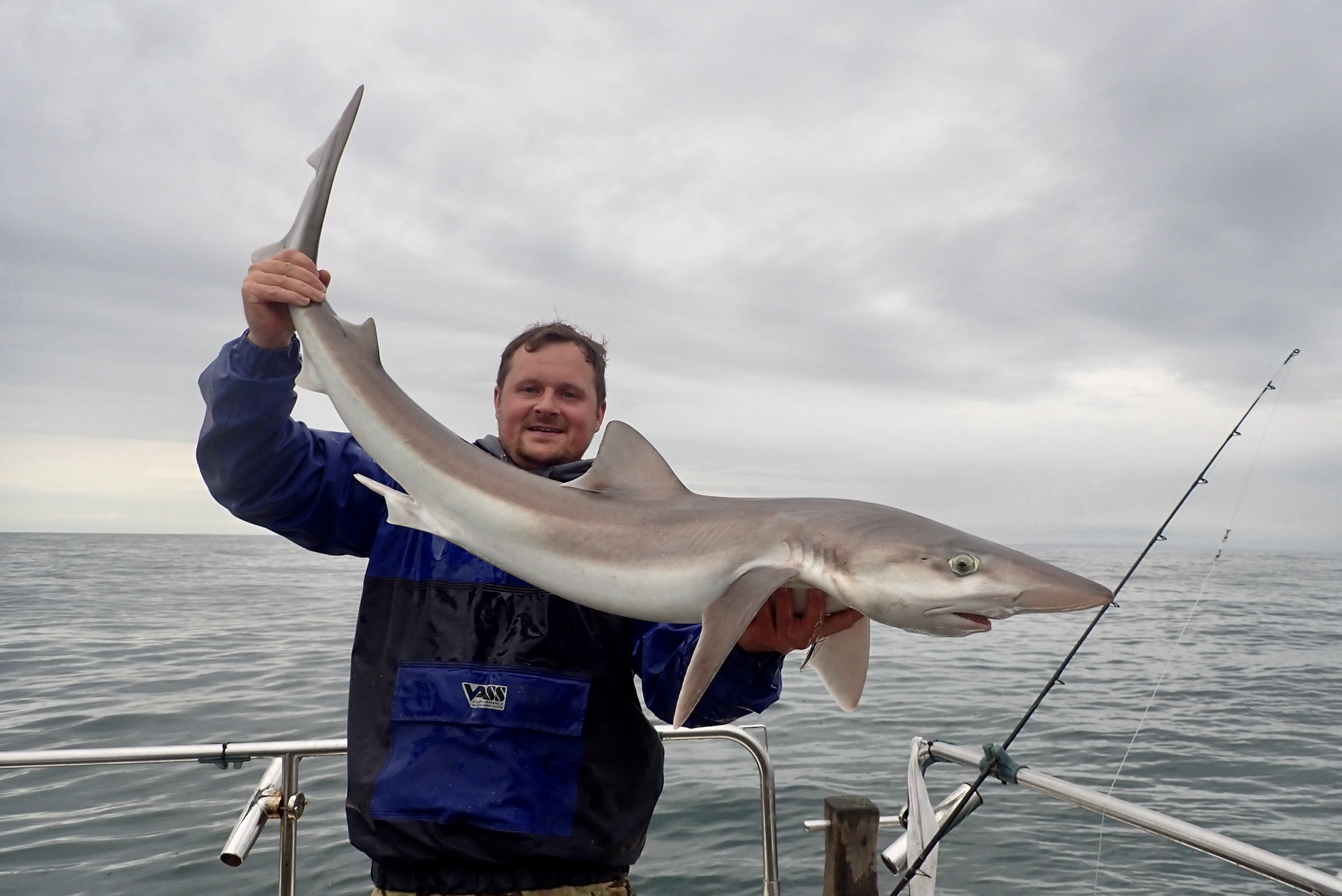


Derek Steven’s was thrilled to catch his first tope and told me that he has fished all over the world but still relishes the beauty of the North Devon coast that is undoubtedly his home territory.


Weak sunshine broke through the grey sky illuminating the seascape. We chatted making plans for future fishing forays all keen to join with Dan on Predator 2. At present Dan is only doing a few trips for mates with a limited number of short range local charters. In the longer term Dan will expand his Chartering to compliment Ilfracombe’s fleet. Offering exciting options for both local and visiting anglers as Ilfracombe’s reputation as a recreational boat fishing destination grows.

As the tidal flow increased and holding bottom became difficult Dan suggested it was time to head back to port. The boat bounced over the calm water seagulls following in the slipstream as always keen to savour any discarded bait.





